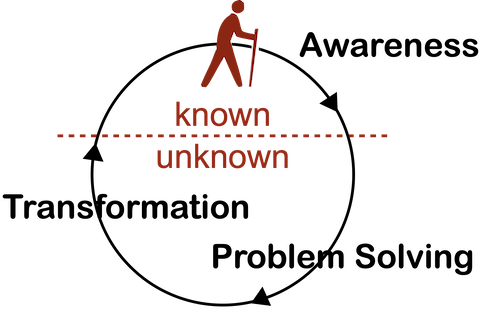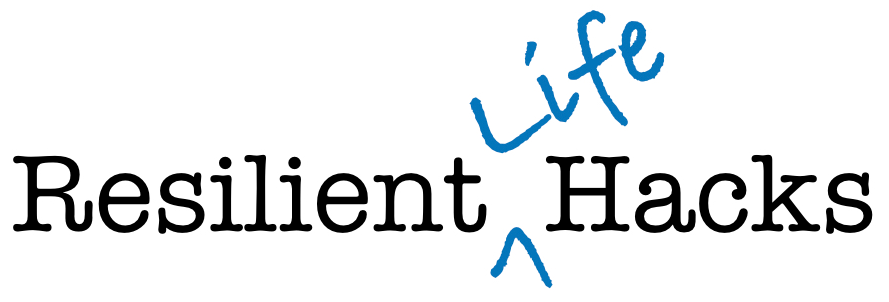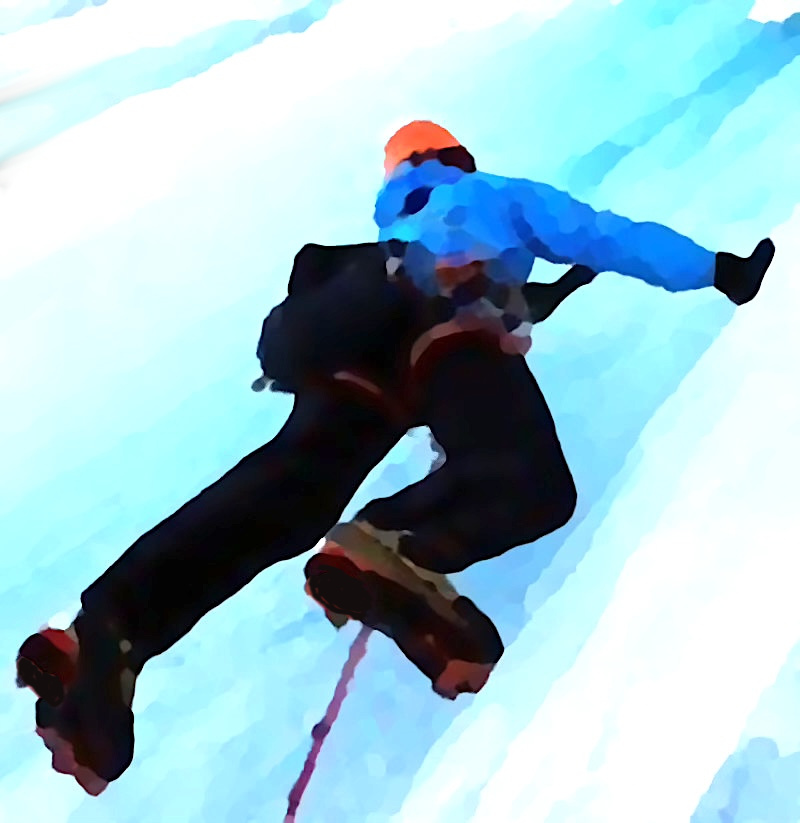A STEM Approach to Resilience
The preceding resilience exercises should be explored before this STEM (Science, Technology, Engineering, and Mathematics) exercise examining the Internet of Things (IoT). Technology has quickly and dramatically changed the way we work, socialize, and communicate. Discover how technology gives us insight on developing a social support system to deal with our challenges while learning about the Internet of Things (IoT) using visual programming (Node-RED). Because of its educational focus, these exercises use the low-cost Raspberry Pi computer. If you do not have a Raspberry Pi computer available, you can still complete all of the exercises using either a Macintosh or Windows computer -- see how to install Node-RED below. These exercises have been tested down to middle school levels.
Raspberry Pi OS
1. Resilience Prep
Complete a Resilience Learning module, such as the Fast-track--Two Skills.
2. STEM Learning
STEM, Resilience, and Raspberry Pi Setup, Part 1 of 3. Discover the positive coping resilience skills we use while doing a Raspberry Pi setup. And, discover how a technology system gives us insight on how to develop a social support system to deal with our challenges. Video »
STEM, Resilience, MQTT, and Node-RED, Part 2 of 3. Video »
STEM, Resilience, Node-RED, and Internet of Things, Part 3 of 3. Video »
Resilience Workbook. The second section of the workbook provides for a more in depth look at these STEM exercises. Workbook PDF »
Mac OS
1. Resilience Prep
Complete a Resilience Learning module, such as the Fast-track--Two Skills.
2. Install Node-RED on Mac OS
Brief, simple Node-RED install for Mac OS for those not using a Raspberry Pi. Video »
3. STEM Learning
STEM, Resilience, and Raspberry Pi Setup, Part 1 of 3. Though you are not using a Raspberry Pi, view this video to discover the positive coping resilience skills we use while setting up a computer. And, discover how a technology system gives us insight on how to develop a social support system to deal with our challenges. Video »
STEM, Resilience, MQTT, and Node-RED, Part 2 of 3. Video »
STEM, Resilience, Node-RED, and Internet of Things, Part 3 of 3. Video »
Resilience Workbook. The second section of the workbook provides for a more in depth look at these STEM exercises. Workbook PDF »
Windows OS
1. Resilience Prep
Complete a Resilience Learning module, such as the Fast-track--Two Skills.
2. Install Node-RED on Windows OS
Brief, simple Node-RED install for Windows 10 for those not using a Raspberry Pi. Video »
3. STEM Learning
STEM, Resilience, and Raspberry Pi Setup, Part 1 of 3. Though you are not using a Raspberry Pi, view this video to discover the positive coping resilience skills we use while setting up a computer. And, discover how a technology system gives us insight on how to develop a social support system to deal with our challenges. Video »
STEM, Resilience, MQTT, and Node-RED, Part 2 of 3. Video »
STEM, Resilience, Node-RED, and Internet of Things, Part 3 of 3. Video »
Resilience Workbook. The second section of the workbook provides for a more in depth look at these STEM exercises. Workbook PDF »
|
Legacy Instruction (2023)
The following instructional material, though still useful, has since been rewritten. The content and theme remains much the same, but the newer instruction better meets the needs of a broader age and reading range. This older instruction has been integrated into a number of institutional resilience programs and may be useful for designing your own materials.
We face a lot of change and uncertainty. How we cope with these stressful challenges is, in part, up to us. By practicing to be resilient, we take greater control of our challenges and we can make our families more resilient, too. Resilience encourages using positive-coping skills to manage stress in an optimal way. These positive-coping skills are considered protective factors because our intent is to take a personal challenge and create a more positive and less stressful outcome. Protective factors include recommendations of the World Health Organization (Suicide, 2014) for suicide prevention. Our objectives, therefore, are to develop social support systems, positive-coping skills for resilience, self-esteem, self-efficacy (believing you are capable of reaching a goal), and problem solving skills. An entirely educational approach is used for learning resilience using the theme of the "Hero's Journey."  Common to many epic stories is the hero who, facing a challenge, goes on an adventure, is victorious, and returns as a transformed person. Some examples are Luke in Star Wars and Dorothy in the Wizard of Oz. The Hero's Journey encourages us to recognize the importance of teamwork through a social support system. Like many sports, as we learn the game, we are also learning how to work as a team. Common to many epic stories is the hero who, facing a challenge, goes on an adventure, is victorious, and returns as a transformed person. Some examples are Luke in Star Wars and Dorothy in the Wizard of Oz. The Hero's Journey encourages us to recognize the importance of teamwork through a social support system. Like many sports, as we learn the game, we are also learning how to work as a team.
The learning is organized as resilience exercises that develop problem solving abilities and bring awareness to the importance of social support by applying positive-coping skills to create less stressful outcomes to our real life challenges. The learning is very effective in groups and can be used with most audiences to include organizations, educational settings, and families. Because this instruction evolved from a university program, those of you with preteens will want to first explore the resilience skill exercises and then adapt them for your children. For example, exercises that have writing can be explored orally. Allow children time to describe their challenges and encourage them to work with you to apply positive coping skills. Like adults, children also need to recognize that their social support system can really help them with their challenges.
The following two methods for learning resilience are oriented to your time constraints and interests. Learning need not occur all at once. Rather, the learning can be broken into smaller segments, for example, working on just one skill. Should you prefer printable resources, the following learning is also provided in the Resilience Exercises. Each exercise is organized into two double-sided pages allowing for easy use in group settings. Resilience Exercises PDF »
Comprehensive--All Skills
1. Pretest
Optional general resilience test before you begin the learning and again sometime after you complete the learning to measure personal change. The Response to Stressful Experiences Scale is for adults and available through GSA. RSES PDF »
2. Background
Brief two minute overview, for adults, of why we need to be resilient and how we can become resilient.
Resilience: Why and How, Part 1 of 3. Video »
3. Learning
This Comprehensive option has you work with all five positive coping skills. Work with another person, using the videos and the first section of the workbook, on the skill exercises for each of the five skills (3 to 4 hours).
Resilience: Why and How, Part 2 of 3. Brief video on learning the Belief skill and developing a social support system. (4 minutes) Video »
Belief flashcard. Skill exercises. More »
Persistence flashcard. Skill exercises. More »
Strength flashcard. Skill exercises. More »
Resilience: Why and How, Part 3 of 3. Brief video on learning the Trust skill with mention of the Persistence, Strength, and Adaptability skills. (4 minutes) Video »
Trust flashcard. Skill exercises. More »
Adaptability flashcard. Skill exercises. More »
Resilience Workbook. The first section of the workbook provides for a much more in depth look at all skills and exercises. Workbook PDF »
4. Posttest
The same general resilience test may be a used sometime after learning to measure personal change. What has the testing shown you about your resilience?
5. Supplements
You can add to your learning using the Resilience App and the STEM Approach to Resilience exercise.
Fast-track--Two Skills
1. Pretest
Optional general resilience test before you begin the learning and again sometime after you complete the learning to measure personal change. The Response to Stressful Experiences Scale is for adults and available through GSA. RSES PDF »
2. Background
Brief two minute overview, for adults, of why we need to be resilient and how we can become resilient.
Resilience: Why and How, Part 1 of 3. Video »
3. Learning
This Fast-track option will ask that you work with two skills, Belief and Trust, and then briefly examine the Strength skill. Work with another person, using the videos and first section of the workbook, on the Belief and Trust exercises. Watch each video for an overview, work the "flashcard," and, if desired, use the workbook for more depth of information. (1 to 2 hours)
Resilience: Why and How, Part 2 of 3. Brief video on learning the Belief skill and developing a social support system. (4 minutes) Video »
Belief flashcard. Skill exercises. More »
Resilience: Why and How, Part 3 of 3. Brief video on learning the Trust skill with mention of the Persistence, Strength, and Adaptability skills. (4 minutes) Video »
Trust flashcard. Skill exercises. More »
Resilience Workbook. The first section of the workbook provides for a much more in depth look at all skills and exercises. Workbook PDF »
4. Posttest
The same general resilience test may be a used sometime after learning to measure personal change. What has the testing shown you about your resilience?
5. Supplements
You can add to your learning using the Resilience App and the STEM Approach to Resilience exercise.
|

 Your goal with this learning is to create your own Hero's Journey while becoming more resilient. Yet, a goal without a plan is only a wish. So, there are three exercises that help move you along in your Hero's Journey. There are challenges, skills to be developed, and companions on the journey. These skills are your protective armor. They make you more resilient. You learn five resilience skills, Belief, Persistence, Strength, Trust, Adaptability, and can create your own skills. One way to make your Hero's Journey is to explore each of the five skills. You can start with the Belief skill and work on the Tell your story exercise. Then, find a companion or companions to work with the Collaboration exercise. Find a real challenge and complete that exercise. Finally, alone or with your companion, work on the Transformation exercise.
Your goal with this learning is to create your own Hero's Journey while becoming more resilient. Yet, a goal without a plan is only a wish. So, there are three exercises that help move you along in your Hero's Journey. There are challenges, skills to be developed, and companions on the journey. These skills are your protective armor. They make you more resilient. You learn five resilience skills, Belief, Persistence, Strength, Trust, Adaptability, and can create your own skills. One way to make your Hero's Journey is to explore each of the five skills. You can start with the Belief skill and work on the Tell your story exercise. Then, find a companion or companions to work with the Collaboration exercise. Find a real challenge and complete that exercise. Finally, alone or with your companion, work on the Transformation exercise.  For younger learners, Woody explores the Hero's Journery. Woody is written at a 4th grade reading level and is illustrated. Woody encourages building social support, self-esteem, self-efficacy (believing you are capable of reaching a goal), and problem solving skills. It recognizes that it is okay to change one's beliefs as we learn new ideas.
For younger learners, Woody explores the Hero's Journery. Woody is written at a 4th grade reading level and is illustrated. Woody encourages building social support, self-esteem, self-efficacy (believing you are capable of reaching a goal), and problem solving skills. It recognizes that it is okay to change one's beliefs as we learn new ideas.  A simple web-based application that parallels the five skills, and further allows you to create your own resilience skills. The simple app permits exploration of a personal challenge using any of the skills. All data are stored locally on your computer or device. Should you want a printable version, the app has been translated to hardcopy in the workbook.
A simple web-based application that parallels the five skills, and further allows you to create your own resilience skills. The simple app permits exploration of a personal challenge using any of the skills. All data are stored locally on your computer or device. Should you want a printable version, the app has been translated to hardcopy in the workbook.  Common to many epic stories is the hero who, facing a challenge, goes on an adventure, is victorious, and returns as a transformed person. Some examples are Luke in Star Wars and Dorothy in the Wizard of Oz. The Hero's Journey encourages us to recognize the importance of teamwork through a social support system. Like many sports, as we learn the game, we are also learning how to work as a team.
Common to many epic stories is the hero who, facing a challenge, goes on an adventure, is victorious, and returns as a transformed person. Some examples are Luke in Star Wars and Dorothy in the Wizard of Oz. The Hero's Journey encourages us to recognize the importance of teamwork through a social support system. Like many sports, as we learn the game, we are also learning how to work as a team.